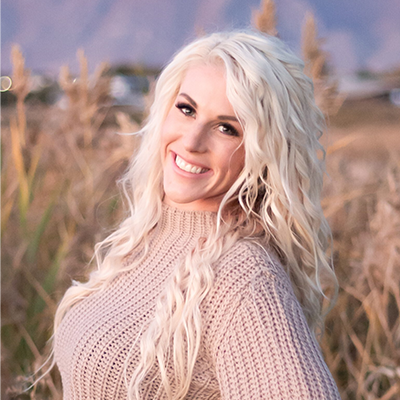Since Temple Grandin revolutionized cattle handling facility design in the 80s, ranchers have recognized the pivotal role efficient handling systems can have on the overall success of their operations. Beyond convenience, a well-designed system contributes to improved safety, enhanced animal welfare, and increased productivity among your herd. In this comprehensive guide, we’ll delve into the intricacies of cattle handling systems, address common challenges faced by ranchers in the industry, and give you a roadmap to choosing the right handling system design for your operation.
Understanding Cattle Behavior
Natural Instincts and Responses
Successful cattle handling begins with an understanding of cattle behavior. Cattle possess instincts that influence their movement and reactions in various situations. Nearly anyone who has worked around cattle has seen the diagram below. It demonstrates how cattle move in response to pressure and its placement within their flight zone.
In short, cattle will naturally move away from pressure at an angle when applied within their flight zone and will stop when pressure is released as the handler moves outside of their flight zone. Your understanding of this concept is the key to designing an efficient, low-stress handling system for your operation.

Factors Influencing Cattle Movement
Aside from the handler’s body position within a cow’s flight zone, factors such as lighting, noise levels, the presence of humans, and the direction of movement (cattle like to feel like they're returning to where they came from) significantly impact cattle behavior.
We’ve all seen cattle spook at sudden noises, balk at stepping into a dark trailer from outside when it’s daylight, or refuse to move forward into your squeeze chute when she can see your staff crowded around it.
By considering these seemingly minor things when designing your cattle handling systems, you can significantly minimize stress and maximize how smoothly your herd moves through your chute system.
Applying Knowledge of Behavior
Applying behavioral knowledge is the key to designing a handling system that works with cattle instincts, not despite them. From alleys and corrals to chutes and loading ramps, every component should be strategically positioned to facilitate natural, efficient movement while ensuring the welfare of your cattle.
At the risk of sounding too cliche, it helps if you walk through your entire chute system and try to ‘be the cow’. Take everything you know about cattle behavior, and ask yourself in each section if you, the cow, would stop or continue moving forward.
If you would stop, ask yourself why. Is it too dark? Too slippery? Too sharp of an angle? Sometimes, something as simple as installing lighting in a dark section of your chutes ( if indoors), or providing a better grip on your loading ramp can make cattle significantly more inclined to continue moving forward, rather than stopping in their tracks, which significantly lowers your and their stress levels.
Designing Your Cattle Handling System
Key Components
When designing your cattle handling system, break it down into its four key components: alleys, corrals, chutes, and loading ramps.
Each of these elements has its own specific role. Alleys are straight walkways that encourage forward movement as a group, while corrals enable you to sort your cattle and provide a holding pen while others move through your system. Chutes push your herd into a single-file line where cattle cannot turn around, and loading ramps are (typically) sloped walkways that lead into or out of a trailer.
Layout Considerations
Flow, size, visibility, and ease of access are not only essential aspects to consider when designing the layout of your cattle handling system but are also largely dependent on your operation’s specifics.
Only some operations will need the ability to run 300 head per hour, and some operations will have the space for that large of a system. You’ll likely have to work within your own limitations when it comes to visibility and ease of access as well.
I firmly believe that you should not have to commit to a full-scale renovation just to optimize your cattle handling system. Working with what you have, and within your budget, is usually more than enough to improve the efficiency of your operation and minimize stress on your herd. Remember, perfection is the enemy of good.
Materials and Construction
Choosing your materials and construction methods will require you to strike a balance between ensuring the longevity of your system and adhering to a feasible budget for your operation.
In general, though, whether you’re using steel or wood, consider the type and frequency of use your cattle handling system will need to withstand while prioritizing the safety and well-being of your herd.
Types of Cattle Handling Systems
Traditional Systems
Traditional systems, featuring fenced alleys, crowding tubs, squeeze chutes, or bud boxes have long been the norm in the industry because they are extremely effective.
They may induce stress in cattle more than more modern, low-stress designs depending on the handling techniques you or your staff employ.
Low-Stress Designs
In recent years, low-stress handling has gained traction, with curved designs and positive reinforcement techniques proving successful.
These handling systems rely on the natural instincts of the animals when pressure is applied within their flight zone, and encourage forward movement with circular direction to provide cattle with the feeling of returning to their entry point, well-lit sections, adequate grip, and sometimes even brush rollers.
Mobile Systems
Many ranchers will have their herd or multiple herds in different pastures throughout the year, depending on your pasture rotation plan, and land leases.
If you fall within this group, a mobile cattle handling system that you can move from location to location as needed may be worth considering. Keep in mind, this might require you to compromise on your ideal layout and material for added flexibility.
Choosing the Right System
Choosing the right cattle handling system depends on the unique needs of your ranch, and it typically isn’t a black-and-white choice. You’ll probably find that the handling system design that is most suited to your operation is a combination of everything discussed above.
Essential Handling Techniques
Proper Use of Equipment
Gates, panels, and sorting gates are essential tools in cattle handling. Using them properly ensures smooth and controlled movement throughout your handling system and minimizes stress for your animals and staff.
There are few things worse than scrambling for the right lever, handle, or lock while the cow you need ends up three heads ahead of you. Taking the extra 15 minutes to review the functional pieces of your cattle handling system is well worth the time and effort.
Low-Stress Handling Practices
Minimizing noise and sudden movements during handling practices is key to maintaining a low-stress environment. This fosters a calm atmosphere, benefiting both cattle and handlers.
Properly using your equipment comes into play here as well. The more familiar you and your staff are with how your cattle handling system functions, the less you’ll need to shout amongst each other or make sudden, rushed movements from one part of your system to another.
Effective Communication
Establishing effective communication with cattle is an art. This is where the chart that we discussed at the start of this article is invaluable.
If you can understand cattle responses and apply them to your body position, you can facilitate their forward movement in a way that is both highly efficient and low-stress for you and your animals.
Safety for You and Your Herd
Personal Safety Equipment
Prioritizing your personal safety is a non-negotiable. It’s always a great idea to invest in gloves, boots, chaps, or anything else necessary to prevent potential injuries during handling operations.
I’m not saying you need to buy everything but the kitchen sink, but be realistic when evaluating your and your staff’s risk and the likelihood of injuries without protective gear.
Preventing Injuries
A well-designed handling system, coupled with proper techniques and equipment, minimizes the risk of injuries to both cattle and handlers. But, vigilance and adherence to safety protocols offer another layer of protection.
When I was working at Penn State’s meat processing facility (affectionately coined “the meat lab”), we had to create HACCP plans for each task we carried out. HACCP stands for Hazard Analysis and Critical Control Points, and while typically applied to food production, I think they can apply to your handling systems and techniques as well.
The goal of a HACCP plan is to evaluate each step of your protocol and identify the risks that are associated with each; these are your critical control points. With the risks identified, you can come up with a plan and invest in the equipment to prevent them, and you can have protocols in place if your prevention measures fail.
Stress Reduction Strategies
Nowadays, there are endless strategies aimed at reducing stress for your cattle. Which ones you decide to implement on your own operation is dependent on your operations needs, staffing abilities, and normal protocol.
One easy one that is more universally applicable than the rest is gradual acclimatization. Essentially this means gathering your herd and letting them sit in a holding pen or corral to de-stress before moving them through your handling system.
Tools and Technology for Improved Handling
Electronic Sorting Gates
These tools may or may not be worth the investment for your operation, but electronic sorting gates can contribute to precision in cattle handling, and alleviate some staffing issues. They can streamline sorting processes and improve overall efficiency.
Monitoring Systems
There are monitoring systems on the market that can track herd health and behavior and provide insights into your herd’s stress levels throughout your handling processes. They can also enable you to identify potential issues early on, helping with prompt intervention and the creation of preventive measures.
Automation and Efficiency
You probably have at least one piece of automated equipment on your operation already. From automated cattle feeders to waterers, these tools streamline daily operations.
Maintenance and Upkeep of Your System
Regular Inspection and Repair
Regular inspection and maintenance of your cattle handling system will save you a lot of frustration and money in the long run. Not only does it prevent running into equipment issues when you’re in the thick of vaccinating or preg checking, it also prevents complete and expensive breakdowns in the future, ensuring your system lasts as long as possible.
Cleanliness and Sanitation
I know that the last thing many of us want to do after a full day of processing, branding, or vaccinating is cleaning down the entire cattle handling system, but maintaining cleanliness and sanitation in handling areas is a small preventative measure we can take against the spread of diseases.
Conclusion
To make a long story (or blog post) short, optimizing your cattle handling system to prioritize efficiency and animal welfare requires a holistic approach combining knowledge of cattle behavior, and thoughtful system design that meets the specific needs of your ranching operation. When you focus on safety, adopt low-stress handling practices, and continuously improve your systems, you can ensure the well-being of your herd while enhancing productivity in your operation.

.jpg)



.webp)




